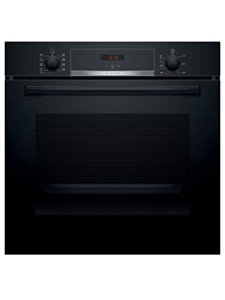5 Killer Quora Answers On Builtin Oven
페이지 정보

본문
The Comprehensive Guide to Built-In Ovens: Features, Benefits, and FAQs
Built-in ovens are a popular option for modern-day kitchen areas, using versatility, efficiency, and a smooth style that incorporates perfectly into cabinetry. This short article will look into the various elements of built-in ovens, including their features, advantages, installation options, upkeep ideas, and answers to typically asked questions.

What is a Built-In Oven?
A built-in oven is created to be set up within kitchen cabinetry and is available in different configurations, such as single or double ovens. Unlike freestanding ovens, built-in designs supply a structured look and provide more versatility in kitchen design. They are available in electric, gas, and steam choices, dealing with a series of cooking preferences.
Functions of Built-In Ovens
Built-in ovens are loaded with features that enhance cooking experiences. Here are some of the most common functions to think about:
| Feature | Description |
|---|---|
| Self-Cleaning | Lots of designs include a self-cleaning function that burns off residue at high temperature levels, streamlining maintenance. |
| Convection Cooking | This feature utilizes a fan to distribute hot air, cooking food more equally and quickly. |
| Smart Technology | Some ovens come geared up with Wi-Fi connectivity, permitting users to manage the builtin oven [go now] remotely via smartphone. |
| Numerous Cooking Modes | Consist of options such as baking, broiling, roasting, and air frying, supplying adaptability for different meals. |
| Temperature Probe | Keeps track of the internal temperature of food, making sure perfectly prepared meals every time. |
| Sleek Design Options | Available in various finishes (stainless steel, black, white) to match kitchen decoration. |
Advantages of Built-In Ovens
The setup of a built-in oven brings many benefits to any kitchen:
- Space Efficiency: Built-in ovens take full advantage of kitchen area, offering a clean and organized look without sacrificing functionality.
- Boosted Cooking Performance: With sophisticated features like convection cooking and precise temperature controls, built-in ovens often exceed traditional designs.
- Style Flexibility: These ovens can be set up at eye level, enabling for easy access without bending down, which can be specifically beneficial for individuals with physical constraints.
- Enhanced Resale Value: A properly designed kitchen with premium built-in appliances may attract potential purchasers, improving overall home worth.
- Customization Options: Many brands use adjustable styles that fit the particular measurements and visual of specific cooking areas.
Setup Options
When picking a built-in oven, Builtin oven comprehending the installation options is important. Here are the most common configurations:
Single Built-In Oven: Ideal for smaller kitchens, these systems provide enough space to prepare a range of meals all at once, perfect for everyday cooking.
Double Built-In Oven: Best suited for devoted cooks and large families, double intergrated ovens enable synchronised cooking at 2 different temperature levels, perfect for meals that require varied cooking methods.
Mix Steam and Oven: A hybrid service that combines the benefits of traditional baking with steam cooking. This alternative is excellent for maintaining moisture in foods, making it perfect for baking bread or roasting meats.
Upkeep Tips for Built-In Ovens
Maintaining a built-in oven is essential for its durability and optimum performance. Here are some useful upkeep ideas:
Regular Cleaning: Use the self-cleaning feature when required, and wipe down the exterior and interior surface areas routinely to prevent grease accumulation.
Examine the Seals: Inspect the oven door seals for any wear or damage to ensure appropriate insulation and cooking efficiency.
Temperature level Calibration: Occasionally check the temperature level precision using an oven thermometer, particularly if cooking times appear longer than typical.
Ventilation: Ensure appropriate ventilation around the oven to prevent overheating, specifically for built-in designs that may be surrounded by cabinetry.
Frequently Asked Questions About Built-In Ovens
1. Are built-in integrated ovens uk more pricey than freestanding designs?Yes, built-in ovens tend to be more expensive due to their style, setup requirements, and additional features. However, their advantages can justify the expense in the long run.
2. Can you install a built-in oven yourself?While some helpful people might try to set up a built-in oven, it is suggested to hire an expert to guarantee proper setup, ventilation, and security requirements.
3. What is the typical lifespan of a built-in oven?The normal life-span of a built-in oven is around 10 to 15 years, depending on use and upkeep. Regular care can help extend its durability.
4. Are built in oven to buy-in ovens energy effective?Many modern built-in ovens are created with energy effectiveness in mind, including features like insulation and exact temperature level controls that might lower energy intake compared to older designs.

5. Can a built-in oven be repaired if it breaks?Yes, buy built in oven-in ovens can typically be repaired. It is advisable to call a certified technician for diagnoses and repairs to guarantee safety and compliance with warranty agreements.
Built-in ovens are an exceptional addition to any modern kitchen, providing a combination of design, performance, and advanced cooking functions. With the right understanding about their features, benefits, and upkeep, house owners can make informed choices to enhance their cooking experiences. As kitchen style trends continue to evolve, the built-in oven remains a staple for those looking to blend aesthetic appeals with effectiveness in their cooking areas.
- 이전글9 . What Your Parents Taught You About Built In Electric Ovens 25.05.20
- 다음글You'll Never Be Able To Figure Out This Built In Electric Oven's Benefits 25.05.20
댓글목록
등록된 댓글이 없습니다.



